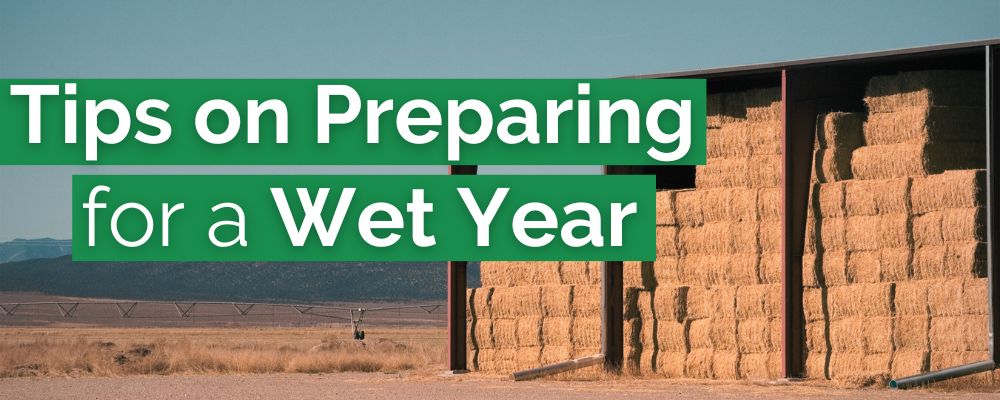
With ongoing rainfall, it’s important to have a strategy in place to keep things moving. Rainfall, while essential for agricultural prosperity, comes with its share of problems. While it’s essential for crop growth, it also poses risks like soil erosion, nutrient loss, and flooding. These challenges can impact your yield and quality. We’ve brought together some tips around what to expect during a rainy year, and what you can do to prepare for wet conditions.
What Rain Means for the Market
La Niña events can have varied impacts on the market, depending on a variety of factors. These include:
- Heavy rains, which lead to favourable pasture conditions, particularly for intensive beef and dairy sectors. Farmers rely on this period to bulk up their herds on lush pastures, reducing the need for feedlots.
- Wet conditions often lead to a reduction in hay demand, with farmers managing pasture growth by holding onto cattle or increasing herds. This shift in cattle retention leads to a rise in cattle prices, justifying feeding through the winter months.
- However, with ongoing rainfall there may be a surge in hay demand as saturated pastures lose nutritional value. Access becomes crucial during these times, ensuring smooth operations for hay and livestock movement.
How to Prepare for a Wet Year
- Infrastructure Upgrades: Ensure farm infrastructure, including roads, sheds, and culverts, are in good condition. Repair any damage and reinforce access routes to withstand heavy rainfall and flooding. This will facilitate the movement of hay, equipment, and livestock during wet periods, and give additional financial opportunities over farms with poor access.
- Shedding for Protection: During wet periods, good hay sheds become paramount for preserving hay quality and nutritional value. Sheds play a crucial role in safeguarding hay from moisture, mould, and degradation caused by prolonged exposure to rain. Farmers should prioritise shedding hay to maintain its integrity and ensure a reliable supply of high-quality forage for their livestock throughout the year.
- Stockpile Feed: Anticipate increased hay demand during wet spells by stockpiling feed in advance. Source hay from reliable suppliers and secure sufficient quantities to sustain livestock through rainy weather.
- Implement Grazing Strategies: Develop grazing strategies to optimise pasture utilisation during wet conditions. Rotate pastures to prevent overgrazing and soil erosion, and consider supplementary feeding to meet nutritional requirements when pastures become waterlogged.
- Invest in Drainage: Improve farm drainage systems to mitigate waterlogging and runoff. Implement measures such as contour plowing, installing drainage ditches, and constructing swales to redirect water away from sensitive areas and prevent soil erosion.
- Prepare for Market Fluctuations: Price and demand can change unexpectedly for hay and cattle during wet years. Monitor market trends closely and adjust production and marketing strategies to capitalise on opportunities and mitigate risks associated with changing market conditions. Don’t expect a normal year’s patterns to stay the same during wetter weather.
By taking proactive steps to prepare for a wet year, farmers can mitigate risks, optimise productivity, and ensure the resilience of their operations in the face of unpredictable weather patterns.
Take the first step towards securing quality shedded hay for your livestock by visiting our listings today.